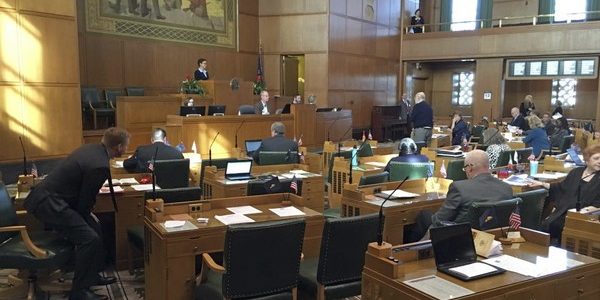By Ginny Lang, Duncan Wyse and Sandra McDonough
By most measures, Oregon’s economy is on fire. Our job growth rate is one of the best in the nation, household incomes are up, unemployment is at record lows and tax revenues to fund public services — driven largely by the positive job and income picture — are the highest ever.
So one has to wonder why, in the midst of this robust economy, state and local governments as well as school districts continue to face imbalanced budgets and an inability to robustly fund critical public services like education, homeless services and health care.
The partners in the Oregon Business Plan — Oregon Business & Industry, the Oregon Business Council and the Portland Business Alliance — along with public and private partners across the state have been wrestling with this riddle for years. And the answer is that Oregon suffers from a structural budget deficit.
In other words, the financial challenges are not primarily the result of a shortfall in funds, but rather they are driven by costs that are growing faster than tax receipts can keep up — even when the economy is at its healthiest.
This issue has been examined for well over a decade and, while some progress has been made thanks to action by our elected leaders, there is still a long way to go. As long as Oregon’s high school graduation rate is one of the worst in the nation — despite per student spending that beats the national average — we know we have work to do.
The Oregon Business Plan partners are committed to being leaders in this conversation. We are already at work developing analysis and proposals for the 2019 session of the Oregon Legislature. Our intention is to share them with our public partners, including the governor and Democratic and Republican legislative leaders, as well as members of city councils, county commissions and school boards across Oregon.
Our framework will have three components:
The costs. How can we bend the growth curve on the costs driving Oregon’s structural budget deficit?
We know this is not an easy conversation. A major issue that must be addressed is the cost of public employee benefits which, because of historic decisions, far exceeds national averages and similar programs in neighboring states like Washington and California. We need to have a constructive conversation with public employee representatives about the Oregon Public Employee Retirement System (PERS) and health care benefit costs while respecting the important contribution public employees make to the quality of life in our state. We think this is possible if we all start from a belief that everyone wants what’s best for Oregon and commit to having open and honest conversations.
Ginny Lang is interim president and CEO of Oregon Business & Industry. Duncan Wyse is president and CEO of the Oregon Business Council. Sandra McDonough is president and CEO of the Portland Business Alliance.







